 I have always believed that everything we use in our lives can be used for more than one purpose. A screwdriver is great for driving screws, of course, but it can also be used as a lever to get the lids off of paint tins. And the same applies to the Bookfunnel website - not the paint tin thing, but other book marketing purposes. Many Indie authors will be familiar with Bookfunnel’s original purpose, which is to deliver free content to readers in exchange for their email addresses. It is a vital tool for people trying to build email lists. It can also be used for delivering free content to existing email subscribers and ARC* readers. So, it is already a multipurpose tool.  But did you know you can also use Bookfunnel to sell your books, using the power of “group promos”? And, importantly, if you are already a subscriber it won’t cost you a penny. In terms of advertising, it works out as a really cheap option. A Bookfunnel subscription costs about $10 a month, which you can easily spend in a day advertising on Amazon or Facebook. First I need to explain about “group promos”, for those of you who aren’t familiar with Bookfunnel (if you are, then please feel free to skim over this bit). Basically, you sign up to a group promo by uploading some free content (novella, short story, or a complete book) to Bookfunnel. You create a landing page for the book and then you join a group, usually one that is relevant to your genre so that the free content goes to the right sort of readers – the sort that read your genre and that you want on your email list. Once you have joined the group, you promote the offer on your social media and using your email list, while the other group members do the same. Your content then gets downloaded in exchange for a reader’s email address and that way you can build your list much quicker than you would by relying on organic growth.  A good group promo could get you as many as 50 new email addresses, though the average is a little lower. Now, substitute “sales” for email addresses. Is making 50 additional sales something in which you would be interested? Stupid question – of course you would. Well, Bookfunnel is there ahead of you. As well as what they call “newsletter swaps”, which build your email list, you can also join “sales swaps”. The basics are the same, upload your book, create a landing page and join a group promo, but one that is focused on sales instead of newsletters. The main differences is that you create a sales landing page and add a universal book link so that the “call to action” button takes the reader to the sales page for your book: Amazon and/or wherever else you sell it. The other difference is that the wording of the promo header makes it clear to readers that the books have to be paid for rather than being downloaded for free (though you can also offer free books).  Just as with the newsletter swaps, you promote the group on your social media and to your email list and the other authors in your group do the same. What are the numbers like? Well, typically a group promo of that sort will be made up of between 10 and 20 authors. We’ll stick with the lower figure so that our estimate is at the conservative end of the scale. If each author has 100 people on their email list, that’s a potential reach of 10,000 readers of your genre. And that’s before you factor in the group's combined social media reach on top. In reality the email lists are likely to be much larger (possibly 1000s of email addresses per author), so the actual reach of the promo is probably going to be considerably higher. All that exposure costs you nothing. Joining the group costs you nothing. Joining Bookfunnel does require you to pay a subscription fee, but if you already subscribe then that is a “sunk cost”. In other words, you have already paid your money, so you lose nothing, but you stand to gain a lot.  Other than their cheapness (you can’t get cheaper than free) there are several other advantages to using these swaps that you don’t get using other advertising methods. 1. You are targeting people who read books in general, but who also read your genre specifically. 2. You don’t have to spend time researching keywords or comp authors, which you do for a lot of ad platforms. 3. Readers are used to getting emails from the authors, so they open them (well, most do anyway). As all Indie authors know, January is a slow month for sales unless you write self-improvement books (people who believe in “New year – New me” buy a lot of self-improvement books in January). Everyone is strapped for cash because of Christmas, so they don’t spend much money on books.  But that doesn’t mean there is no book market. You just have to go looking for it. Many people get new Kindles or other ereaders for Christmas, so they are looking for books with which to load them up. And people who like reading will still buy books – if they are cheap enough. So, it’s a great time to run a Kindle Countdown Deal, especially if you write series. Set your series starter to 99p (99c) (or even free) and use a Bookfunnel sales promo to advertise it. You can pick up a whole lot of new readers without having to spend money on advertising, so your financial risk is zero. Just for a change you aren't paying to give soemthing away for almost no return. You can promote full prices books, but this does work best if you are offering free or heavily discounted books. And even if you don’t get sales, you are likely to pick up new readers through KindleUnlimited if your books are subscribed to Kindle Select.  Pro tip. Email lists cover a lot of territories where you can’t run Kindle Countdown Deals, and you are limited to running them in 2 territories at a time anyway. That means that the readers in many territories get starved of bargain books. Canadian and Australian readers will be jumping up and down shouting “That’s us. We don’t get them” right now and those two countries have big book markets. This is your opportunity to get readers in those countries on board because email list are often international, but you will have to adjust the price of the book manually in the KDP price settings. Remember to do that a couple of days before the start of the promo, because it can take a couple of days for price changes to filter through the system to reach all available territories. And don’t forget to adjust the prices back to normal after the end of the promo. You don’t have to be on Kindle to make this work for you. So long as you can use a universal book link to take the reader to the right place to buy your book, you can use these swaps. So, if you are already a Bookfunnel subscriber, what are you waiting for? And if you aren’t a subscriber, this is another reason for joining. * ARC = Advance Review Copy – a book provided for free in advance of publication, in exchange for a review being posted on Amazon/Goodreads after publication.. If you have enjoyed this blog, or found it informative, then make sure you don’t miss future editions. Just click on the button below to sign up for our newsletter. We’ll even send you a free ebook for doing so.
0 Comments
 Bookbub ads sell a lot of books. The numbers don’t lie. When it comes to books, it is probably the most effective advertising platform other than Amazon ads. Some might say it’s better, but we aren’t going to get into that argument. If it is such a good way to sell books, how come so few Indie authors use it or, at least, don’t use it more than once? Lots of Indie authors try Bookbub ads, don’t make the sales they expected and so don’t go back again. But the problem doesn’t lie with Bookbub, it lies with not using Bookbub ads correctly.  Such is the size of Bookbub’s reach (about 10 million subscribers), and the way it is able to target a book to the right reader, a single Bookbub Featured Deal can catapult a book into the stratosphere in terms of sales. The key thing about Bookbub, however, is that its subscribers are looking for deals. If they weren’t, they could just scroll through Amazon like everyone else. And that means if your book isn’t a bargain at the time you advertise it, it is less likely to get responses. But Bookbub is expensive to use. Well, yes – and no.  A Bookbub Featured Deal is expensive. They start in the $ hundreds for niche genres and can go well into the $ thousands for the most popular genres. But Bookbub ads are quite cheap, certainly competitive with Amazon and Facebook ads. Bookbub Featured Deals are difficult to get. It sometimes takes months to get one and some books may never be selected. True, but a Bookbub ad can be up and running today.  Perhaps it may help if I explain the relationship between the two things – because they are linked. Bookbub Featured Deals are in high demand (despite their expense) so you have to apply for a deal and go onto a waiting list and then be selected. Some books may never be offered a deal at all. Bookbub favours some books over others. It will take longer to get a deal if:
Even if you tick all those boxes it is still possible to get a Bookbub Featured Deal, but you could grow very old while you are waiting.  The way the deals work is very simple. An email is sent out to the relevant subscribers (by genre and subgenre) and it contains a list of perhaps a dozen books, along with the price and a link to where the book can be bought. But if the readers scroll down to the bottom of the list, they will see something slightly different. They won’t see a featured deal, they will see an ad – and it could be the ad for your book. Because those ads are selected by bidding, just as Amazon ads are. If you make the right bid, your book will win that prized slot at the bottom of the email and it will sell enough books to make it worth your while.  Provided you set the ad up correctly, of course. And that is the bit that Indie authors get wrong, which is why some Indie authors leave Bookbub shaking their heads and vowing never to return. So, what is it that makes a Bookbub ad work? The first thing is to remember where the ad is going to be seen. It is going to be seen at the bottom of an email that is chock full of special deals. So, if the Indie author tries to sell their book at full price, they aren’t going to stand much chance of success. 99c (99p) deals work the best, as most of the deals above the ad will probably be higher priced, even though they are special offers. The expense of paying for a featured deal has to be recouped somehow!  Secondly the graphic has to be right. There are no words to sell the book, only an image. So, if the image isn’t attractive, the ad won’t get a click. Just putting up the book’s cover is not going to sell it. The image must also contain the price, because there is no other way that the Bookbub readers will know they are getting a bargain. The image we show here is one we used for one of our books (BTW it is no longer on special offer, so don’t expect to find it for that price). Bookbub is very specific about the size of the graphic. It has to be 300 pixels wide and 250 pixels high – not a pixel more and not a pixel less. Bear that in mind when creating the graphic. Some graphics packages have Bookbub specific ad templates to help you get it right. Bookbub does offer its own template to create the graphic but it has very limited capability to be customised so it will never be as good as one that is you create for your book. You can create something quite quickly using a free graphics package such as Canva, but we use Bookbrush as it has a lot of other features that we need that Canva can’t provide. But the big thing to note about that graphic is the big “99p” that is visible, so that the reader knows the book is a bargain. The next critical part of using Bookbub is getting the targeting right for the ad.  Bookbub will quite happily send your ad to everyone on its mailing list – but you are paying for that, and the vast majority of subscribers won’t be interested in your book because it isn’t in the genre(s) they read. But you will pay for that exposure anyway and it will eat through your budget in double quick time.. Targeting by genre (category) saves you money and increases the chances of your ad selling your book because the readers who see it are the right sort of readers for the book. But it isn’t just about genres, it is also about selecting good comparable (comp) authors as well and Bookbub allows you to do that too. These are authors whose books would sit well next to yours on a bookshelf. You could go for the biggest sellers in your genre, but that isn’t actually the best comp for an Indie. Those people are best sellers because the readers like their books specifically. It doesn’t mean they would buy your book too. You may reach a massive audience but hardly get any sales.  Selecting lesser comps is usually a better tactic. You can type in the name of a good comp author and if they have a profile on Bookbub (I’ll return to profiles later in the blog) you can select them as one of your comps. Bookbub will then include their audiences in the email list to which it sends your ad. A good mix of genre selection and comp authors should give you an audience that will be receptive to your books and sits in the middle of the green section of the dial that shows the potential audience size for your ad. If the pointer is in the yellow the audience is too broad, and the ad will cost you money by being seen by the wrong readers. If it’s in the red the audience is too narrow, and your ad might not be seen at all. You should be looking for 3 – 5 comp authors. Finally, we get to budget and bidding.  Your budget is whatever you can afford, of course, but if it isn’t high enough your ad won’t reach enough people and may not sell many books. If you can afford $10 a day (about £7.80) you are at the bottom end of the scale. You should be looking for $15 if you want significant results and you can go as high as your wallet will bear. Series authors will be able to afford to pay more because they will make their money back from “read throughs” to the next book in the series. If you are doing ad testing (which you should, and I’ll return to that in a minute) then you want to spend your overall budget as quickly as possible so you can get results for analysis. If you are running an ad that has already been tested, you may want to spread your ad over a defined period. If it is a tested ad you can set your budget higher at less risk. Never leave an ad to run without setting an end date. It could work out to be very expensive if you forget to terminate it. Finally, do you want to pay at a cost per click (CPC) rate or a cost per thousand clicks (CPM – M standing for “mille”, the Latin for 1,000)? The recommendation is CPM as that works out more economical, but it’s your choice. The key thing is to set a bid that’s going to win the bidding war. Bookbub makes a recommendation as to what level of bid to set according to the genres you have selected for the ad. Always bid higher than the highest suggested bid if you want to win that war. It doesn’t mean that your bid will cost you that, because it will only be charged at the level necessary to beat the next highest bid. But it will mean you will outbid every other ad most of the time, which increases your ad’s visibility.  When it comes to CPM bids it may mean your bid is higher than your daily budget, but don’t worry about that. It just means your ad will be seen by less than 1,000 subscribers each day. But it will still be seen by several hundred. Now to return to ad testing. There are two variables that need to be tested, but Bookbub has no facility for doing A/B testing, so you have to do it yourself by trial and error. The first variable is the graphic. A poor graphic won’t sell your books. If you have a graphic you know to be good because it worked for you elsewhere, eg Facebook ads, then it is fine to use that without testing, but if you are using a brand new graphic you have to be sure it is going to sell you books. So, you may want to test 3 or 4 different graphics by running an ad for each and analysing the results. Once you have tested all 3 (or 4) images, you will be able to decide which was the winner from the data Bookbub provides and that is the one you will run with. The second variable is your comp authors. If you don’t pick the right ones, your ad won’t be seen by the right audience. That will require additional testing, running each ad with the winning graphic but a different comp author for each ad. By setting your budget to be spent as quickly as possible, you will get your results more quickly for each test. No doubt some of you have seen the flaw in the testing tactics.  Kindle Countdown deals only run for a maximum of 7 days, and testing will use up between 2 and 4 days of that period, leaving fewer to make significant levels of sales. So, if you are running an ad for the first time you may have to set your book’s price to 99p manually for the duration of the testing, then set up a Kindle Countdown deal for the final winning ad, increasing the budget and spreading the spend over the 7 day countdown period. However, you only have to do the testing once. When your book is eligible for its next countdown deal, in 3 months’ time, you can use the same graphic and the same comp authors with the knowledge that you already have a winning ad. Now, I mentioned profiles above and it is recommended that you set up your own author profile on Bookbub. That isn’t so that other authors can use you as a comp, it’s because readers can see your profile and find out about your books. Your books will show up in searches that readers do on Bookbub itself, when they go looking for the latest bargains. As there are fewer books listed on Bookbub than there are on Amazon it is more likely that your books will be seen there, and it costs nothing to have a Bookbub profile. If you would like to dive deeper into the nuts and bolts of advertising with Bookbub, here’s a video from David Gaughran. If you have enjoyed this blog, or found it informative, then make sure you don’t miss future editions. Just click on the button below to sign up for our newsletter. We’ll even send you a free ebook for doing so.  We blogged about Publisher Rocket a couple of years ago, but Dave Chesson, the man behind the product, has just released a brand new version and it is even more powerful for Indie authors than ever before. For that reason, we are bringing you this update. Unfortunately, along with its new features has also gone a price hike. It now costs $199 (special offer price, correct at time of writing) for a lifetime subscription (that’s about £155 for us Brits). Naturally, you have to sell more books to repay that investment. What must be borne in mind, however, is that the tools Publisher Rocket provides actually help you to sell your books, whether you advertise or not.  The key thing about publisher rocket is its ability to provide you with genre, competitor and keyword information that makes sure that your book not only appears in searches on Amazon, but it appears higher up the results list, so that it is more likely to be seen. It also makes advertising on Amazon a whole lot easier by providing you with keywords appropriate for your book, so your ads are seen by the right people – people who read books like the ones you write. It is able to do this because it makes use of Amazon’s search history data. That data is gold dust when it comes to both publishing and advertising books and we, as Indie authors and publishers, have no way to access it by ourselves.  Amazon has become very concerned about what is known as “customer experience”. Basically, how easy shoppers find it to use Amazon. Part of that experience is the customer’s reactions to seeing irrelevant products in search results. Seeing a dark fantasy novel appearing in a search for high fantasy is probably not something that most shoppers would worry about. But seeing a Regency romance novel appear in a search for high fantasy is likely to irritate customers. If it happens a lot, it will irritate them a lot. And that is why Amazon have introduced a major change into their advertising process. The relevance of keywords has never been more important. Having irrelevant keywords in your ads can cost you more money and they may result in you selling fewer books. This is the exact opposite of what many Amazon Ad gurus used to advise, which was basically to load up your ad with as many keywords as possible, even if they were only remotely connected to the genre of your book.  I’ll run through this briefly, but it is important. When you set up a “sponsored product” ad with Amazon, using your own list of keywords, Amazon now scans your book’s meta data* and gives the keywords a “relevancy score”. The better that score, the higher up the pecking order your ads will be placed when it comes to the bidding process that decides which ads are shown to the customer in response to a search.. When the bidding process is carried out, the higher the relevancy score, the more likely it is that your ad will be the one chosen. If Ad A and Ad B both have a maximum bid of 50c set, then the ad with the higher relevancy score will be the one that is shown to the customer. This helps Amazon to prevent irrelevant ads being shown to the customer, which annoys them. What this could mean is that ads with lower relevancy scores have to spend more money to win the bidding process. Depending on their maximum bid setting they may never be seen at all. And an ad that isn’t seen can’t sell your book.  As publishers we use Publisher Rocket a lot to help us find the right category listings for the books we publish, to find the right 7 keywords to put into the book’s meta data and to find the right keywords to use in our Amazon Ads. To indicate how useful this tool is, we’ll tell you what happened the first time we used one of the new features. Like a lot of authors, we have always struggled to find the right 7 keywords to put into the meta data for the books we sell. This is why we have found Publisher Rocket so useful, because it helps to take the hard work out of finding keywords. One of the new features allows us to do a “reverse search” to find books like our own, and then find the keywords that are helping those books to sell, so that we can use them too.  So, we pasted the ASIN for our book into the box in Publisher Rocket, then pasted in the 7 keywords that we had used in the meta data for the book when it was last uploaded. The app then provided us with a list of books that Publisher Rocket, using Amazon’s search data, thinks are similar to ours. We were very, very surprised to find that all the books that were provided for comparison were non-fiction. The reason that we were so surprised is because our book is fiction. Now, things aren’t as bad as they might seem, because the book has actually been selling as a result of the searches that it showed up in. But it could obviously have been doing better if it had shown up in searches for fiction rather than non-fiction. The next bit of the process was a bit more time consuming, but necessary.  To find comparable fiction books we had to go onto Amazon (using incognito browsing) and do searches of our own to find our direct competitors. Once we had found the right sort of book, we pasted its ASIN into Publisher Rocket so that it could do its magic. We needed to provide 3 ASINs from books by different authors, to give Publisher Rocket enough data to work with. We then got back a lengthy list of search terms that had been used to find the three books we had identified. After that it was just a case of picking the seven most relevant terms for our book and entering them into the meta data and re-publishing it. So, if those same search terms are now used again by readers, our book will show up alongside those competitor books. But we didn’t stop there.  We run Amazon Ads for the same book and none of those keywords were included in the list of keywords for the ads. But now we were no longer limited to just seven selections, we could use more, which we did. So, in the space of about 20 minutes we were able to make both our meta data and our Amazon Ads more relevant and therefore more likely to be seen by the right readers - the readers that will actually buy the book. The most noticeable thing to be seen was that almost immediately we started to get more clicks on our ads. Quite clearly our book was now more relevant to the searches readers were doing. But more importantly, because the book was more relevant to the readers, more clicks were being converted to sales. Obviously, we can’t guarantee that you will experience similar results, but when marketing a book every little thing you do makes a difference and the most important thing to do when you launch a new book is to make sure that it is in the right categories and has the right meta data. If nothing else, Publisher Rocket will put you on the right path to success.  While we’re at it, we’ve discovered a way of getting 14 keywords into your meta data and it’s so simple we feel a bit stupid for not spotting it before. Most people set up their ebook before their paperback because it is less complicated and because an ebook can go on pre-order. The meta data for the ebook is then copied across to the paperback version’s meta data automatically when it is set up. Which means the same 7 keywords are copied across. But those keywords can be changed! Which means that you can use Publisher Rocket’s capabilities to use 7 different keywords for the paperback. Double the number of relevant keywords means double the chances of your books showing up in appropriate search results. The key messages for this blog are therefore: 1. The relevancy of the keywords in your meta data has never before been so important, 2. If you use Amazon ads, your ads may be more expensive and might not even be seen if your keywords aren’t relevant. 3. Finding more relevant keywords for your books is now much easier using the latest version of Publisher Rocket. To find out more about Publisher Rocket, click here On the website you can also gain access to a free course on using Amazon Advertising more effectively. You don’t have to buy Publisher Rocket, but you do have to subscribe (free) to the website.  And here’s a one time special offer for you as readers of this blog. If you don’t have Publisher Rocket, but would like to check the relevancy of you book’s keywords, we’ll run a free check for you. Just sign up for our newsletter (button below), then email us at [email protected] to claim your free relevancy check. You’ll get an email back from us asking you to provide some basic information about your book, so please check your spam folder to make sure you don’t miss it. You’ll also get the free ebook that we always give to new subscribers. * For those of you not sure what we mean by meta data, it is all the information you provide on the first page of KDP when you start to upload your book: Title, subtitle, blurb, categories and, of course, 7 keywords/phrases. FYI, a “keyword” can be up to 50 characters long.  Do you know what a datapoint is and why it is important to authors? No, neither did we until a few weeks ago. But knowing about them may explain why some social media advertising is less than effective. Essentially a datapoint is one tiny bit of data that an algorithm can use to connect it to another datapoint. Think about it the way you would think about a pattern matching game such as “Mahjong” (the computer game, not the ancient Chinese tabletop game). If you find tile A in Mahjong and then find a second copy of tile A, you click on the two of them and you remove them from the puzzle, at the same time as winning points.  Every time you do something on social media, you create datapoints which the platform then uses to direct advertising towards you. You are creating multiple sets of Mahjong tiles which the algorithm will use to match the same tiles that advertisers have used. Every time you “like” a post; every time you comment on a post; every time you share a post, you create a datapoint for the platform to work with. Even the words you use in your posts and comments become datapoints. For example, a friend posts an image of a donut they are about to eat. If you “like” the post, you tell the website’s algorithm you that you like donuts. If you comment on the image, you create more datapoints related to donuts.  It should, therefore, come as no surprise if you start to see advertisements for donut brands or donut shops on your timeline shortly afterwards, because the algorithm now knows that you have an interest in donuts, and it can make money for the platform by targeting you with donut related adverts. The reality may be that you “liked” the post because you like the friend, not the donut (you may actually hate donuts), but the algorithm doesn’t know that. It has made up its mind that you like donuts so that is that. Knowing this can help you when you use social media for advertising, because the platform wants to know which users to send your advert to so that they see it. Because when they see it they may click on it and then the platform can charge you for that click.  So sending the ad to the right people is not only important for you, it is important for the platform. So, this is something you need to know about if you want to use social media efficiently for advertising. For example, if you pay for an ad on Facebook, its advertising algorithm goes looking for the right people to whom it should show your ad. It could show it to everyone on the platform, but that isn’t efficient because not everyone will interact with your ad, so it won’t earn Facebook any money. First it scans all the content in your ad (the image, the text, the link etc) and converts it into data points. Then it goes looking for users to match your ad up with. To extend the Mahjong analogy, if your ad is tile A, the algorithm looks for users who also have tile A. How does it know? Your book is the equivalent to the donut we used in our analogy. If your ad includes references to fantasy, the algorithm goes looking for users who have fantasy related datapoints recorded against them.  But the algorithm won’t send the ad to people who have “romance” in their datapoints. We will use Facebook (Meta) as an example, but all the social media advertising algorithms work the same way. Your ad for your book works like the ad for the donut brand or donut shop. It looks for people who (a) like books, (b) like books in your genre and (c) anyone who has ever interacted with posts that use any of the words in your ad and who therefore might be interested in your book. Point C in the para above is the most important if you advertise on social media, because it can make the difference between your ad being seen by the right readers and it not being seen at all. But success breeds success for the algorithm. When it finds a user who clicks on the link in your ad, it then uses that user's other datapoints to find more users like them. It "learns" from its successes to improve its targeting of users. Typically, authors use the blurb for their books as the primary text for their social media ads. That’s fine, it makes sense to do that. However, it can also cause problems. A good blurb will be between 250 and 350 words long. Take out all the common words: prepositions, pronouns, conjunctions, adjectives, adverbs etc which are useless as datapoints (because they are so common) and you are probably left with less than 100 datapoints (proper nouns, nouns and verbs mainly).which can be used to connect your ad to the right audience.  Let’s say you write fantasy or sci-fi and you use a lot of made up names for characters and locations in your books. Now let’s say that you use some of your made up words in your blurb, which forms the text for your ads. They are useless as datapoints because they won’t appear as datapoints that Facebook users have reacted to in the past. They have never heard of the land (or planet) of Gigariga and so Facebook’s algorithm won’t be able to find any datapoints that relate to Gigariga. Which means that using your blurb may have reduced your potential number of datapoints from around 100 to a much smaller number, which means that Facebook will show the ad to fewer people. It may even show the ad to the wrong people, the ones who would never think of buying your book. The lesson to be taken from this, therefore, is the same one that applies to using Keywords on Amazon. Make sure you use the right datapoints. This may mean re-writing your blurb.  If your book is a fantasy, then you have to use that word and as many synonyms for it as possible in order to maximise the number of fantasy readers who will see your ad. The same applies to other datapoints, such as action, adventure, mystery, challenge and thousands more words that you might use. You don’t want to be too general in your wording, so that your ad is shown to readers who never read fantasy, but at the same time your datapoints mustn’t be so narrow (like using your made up words) that Facebook can’t find anyone to which it can show your ad. Just copying and pasting your blurb into your Facebook ad may seem to be quick and easy, but it may also be sabotaging your efforts and causing you to waste money. So, think about those datapoints and make sure they are present in your advertising copy. That is what professional copywriters do every day; which is why their advertising works. If you have enjoyed this blog, or found it informative, then make sure you don’t miss future editions. Just click on the button below to sign up for our newsletter. We’ll even send you a free ebook for doing so.  You would think that a box set of 9 full length sci-fi novels, each story 80k+ words in length, priced at £9.99 ($9.99 if you are in the USA) would be flying off the shelf. But it wasn’t. We were wondering why, so we got the team together in Selfishgenie House (a Zoom call made from my living room, to be truthful) and had a bit of a brainstorming session on the subject. Along the way we started to discuss the psychology of purchasing and how it might be working against us. The box set is priced at £9.99, which we think is a bargain. But for the reader that may not appear so. Perhaps they are thinking “If I read the first story and don’t like it, I’ve wasted 8/9ths of my £9.99”.  Why would they think that? Because, at some point, they have bought a box set and that has happened to them, so they don’t want to risk doing it again. We know that books at much lower prices than the box set don’t sell because readers don’t want to take a risk on an author that isn’t well known. So the possibility must exist that people don’t want to risk their money paying more for a box set they may not like. The author of The Magi series is quite well known and has a strong following for a different series. The problem is that the other series isn’t sci-fi, so most sci-fi readers probably don’t know about him and his books. So, as problem solvers, what could we do about this barrier to sales for a box set that should be flying off the shelves but isn’t?  We knew that Kindle Countdown deals had worked for the author’s other series. We had sold the first book of the series at 99p and then got lots of follow-on sales for the rest of the series at the normal price. Would that also work for the sci-fi box set? We decided that maybe we should put book 1 of the sci-fi series on a Kindle Countdown deal for 99p (99c USA) and then promote the hell out of it. But then one of our team pointed out that wouldn’t work unless the reader also knew that they could get the box set for a bargain price. So, how could we get that message across? If we tried to make it part of the advertising copy, it would be far too cumbersome, something along the lines of “Get a sci-fi book for 99p and then, if you like it, buy the whole series for £9.99.” It hardly rolls off the tongue, does it?  But there was something we could do. We could strike while the iron is hot. If someone has just read a book they liked, then the time to sell them the next book in the series is right then, immediately after they have read the words “The End”, because they are probably wanting more of the same. So, it should also work if we do the same thing for the box set. Which is what we decided to do. We edited the manuscript for the ebook of the first book in the series and added this bit immediately after the “The End”. “An Kohli* says, “If you have enjoyed ‘The Magi’, the first book in the Magi series, you can read books 2 to 9 for the bargain price of $9.99 (USA) or £9.99 (UK) with ‘The Magi Box Set’.” Find out more here.” * An Kohli is the name of the main character in the book. We then uploaded the new manuscript to KDP, set the dates for the Kindle Countdown deal and waited to see what happened. Did it work? We are delighted to say that it did.  The 99p book flew off the shelf, though we did pay quite a lot for advertising over the period of the Kindle Countdown deal. But then the box set started to sell as readers bought into the whole series. That was enough to pay back the advertising costs and then reap the rewards. But that wasn’t all. We started to get KENP reads for the box set too, off the back of the same advertising campaign. OK, we don’t earn as much from KENP reads, but money is money! Would the same tactic work for your series box set? We see no reason why not.  Authors are often reluctant to discount their books because they see it as devaluing their brand. Fair enough. If that’s the way you think, then it’s your privilege – but how are your sales looking from on top of your high horse? Some authors have a better reason for not discounting their books, which is that if someone buys the book at the cheaper price, they aren’t going to buy another copy at full price.  But this approach is different, because it uses a sprat to catch a mackerel as we say over here (or my mother used to say, to be more accurate). Even if you haven’t got a box set to sell, but do have more books in the series, the same principle works, though you do have to sell more individual books to recoup your advertising costs. There are other factors that come into play when using this approach. First of all, the surge in 99p sales pushes your book up the Amazon sales rankings. “The Magi” jumped from around 500,000 in the Amazon rankings to 18,000 literally overnight. Its category rankings were even better, at 117, 129 and 196.  Many readers only buy books that other people are reading, so the book appearing to be popular, by being well up the sales rankings, is a definite selling point. The book also starts to appear in a very important list on Amazon, the "also bought" list: “People who bought (insert title of another author’s book) also bought (insert title of your book)”. That list (usually shown in a carousel format) influences some readers, again because they like to read what other people are reading. They feel reassured by other people’s reading choices. And, finally, even though the book only cost the reader 99p, some of them will still review it, so you can gain a few extra reviews for your book which should, if it’s a good review, encourage more people to buy, probably at full price if the Kindle Countdown deal has ended.  And you can do the same thing every 3 months, because that is how often you can run Kindle Countdown deals. Paying for advertising for a book that only costs 99p appears to be a taking a big chance and we would agree that there is a risk there. But with risk comes reward. People who never take risks never achieve anything and that includes not achieving best-seller status. We can’t promise you that your series or box set will start to fly off the shelf. All we can tell you is that after taking this approach, we had a considerable increase in the sale of our box set. If you have enjoyed this blog, or found it informative, then make sure you don’t miss future editions. Just click on the button below to sign up for our newsletter. We’ll even send you a free ebook for doing so. We very rarely recommend products on this blog, so when we do you can be sure of two things. (1) We haven’t been paid to make the recommendation and (2) the product we are recommending has been of some tangible benefit to us.  This is the case with “Meta Ads Mastery for Authors”, a training course provided by Matthew J Holmes. To prove that it works, later in the blog we have posted a graphic showing the increase in Amazon sales we experienced over a 90 day period, for just one of the series of books we publish. Now for our upfront warning. This isn’t a “magic bullet”. It is not going to turn you into a bestselling author overnight. It will take time to learn the strategy and to refine it to make it work for your books. It will also involve some financial risk taking. Most importantly, it can’t turn a bad book into a bestseller (nothing can do that). BUT, if you stick with it, you will get results and those results are going to repay your investment.  Now, fair warning, for Indie authors adopting this strategy - it requires strong nerves. The financial outlay is far higher than we have had to make when we have tried out other marketing tools. It is also quite time consuming both in terms of working through the training materials and then trying out the lessons learnt. But as the old saying goes “You have to speculate to accumulate” and speculation, by its very nature, is risky and not for the faint hearted. However, we wouldn’t be recommending this product if the lessons it teaches didn’t work and here is the proof. We paid for the product on 2nd March 2024 and started to implement the early lessons on 4th March. The graphic below shows results for first 5 months of the year. The red arrow on the graphic shows where we started to use this new strategy (sorry we’ve redacted the actual royalties and sales data, but that is commercially sensitive information). In terms of orders, you can see a dip in month 2 of our experimental period. That is because the orders for month 1 were skewed by a 99p promotion that ran for 7 days. When the orders for that are discounted, the peak for month 1 is much lower, so the overall upward trend is more visible.. To assess whether our ad campaigns were successful or not we have used a calculation called “Return On Advertising Spend” (ROAS) which Matthew teaches in his course.  Essentially, this is the amount of royalties we received divided by the amount of money we spent on advertising, which gives us a number. If the number is greater than 1, our ads earned us more money than they cost. If they are less than 1, they cost us more than we made. We have included some of the cost of purchasing Matthew’s course in the ROAS calculation, as that is part of our costs. We decided to allow 12 months to recoup the cost, so we allotted 3 months’ worth of recovery to the ROAS calculation. Our ROAS for the 90 day period was 1.2 which means we made £1.20 in royalties for every £1 we spent on advertising. While that may not sound every exciting, when you scale that up to the hundreds or even thousands of pounds, the profit actually starts to look very impressive.  We also saw a considerable increase in KENP reads (KundleUnlimited (KU) downloads) during the same period, taking us from around 30% of total income to over 50% of the total. That means our ads reached a lot of KU subscribers. The book we were advertising is Book 1 of a series. We saw an up-tick in the numbers of sales we were getting for Books 2 to 9 during our 90 day experimental period, but some downstream sales won’t appear for several weeks yet, so we have to take them into consideration, but we haven’t factored them into our ROAS calculation because we don’t want to count our chickens before they are hatched.  An unexpected bonus during this period was for increased sales of the audiobooks for the series, of which there are 3 so far. During the 3 month testing period, sales surged to exceed the total for the financial year 22/23 and 23/24/ They now make up 40% of the lifetime total for the 3 books. While the sales link took the Facebook users to Amazon, it appears that listeners to audiobooks saw the ads and went looking for the audiobooks on their preferred sites. But there is no doubt that there is a large financial risk to using this strategy and that risk may not be acceptable for some authors, even though we are able to demonstrate through our own experience that the risk is reasonably low. Which is fair enough. It’s your money so it is you that is taking the risk. But we took the risk so you didn’t have to (you’re welcome).. Matthew does explain that you can spend less each day on your advertising, but that means it will take longer to achieve meaningful results. At the end of the day, it is up to you how much risk you are prepared to take in order to benefit from the sort of rewards that we have shown in our graphic. If that hasn’t convinced you that the product is worth the investment, then nothing will, so thank you for reading this far and we’ll see you next week for our next blog. For those that are still making up their minds, please read on for the rest of the product review.  What the course teaches you. The first thing you are taught is that an ad can’t sell your book. Your book has to sell your book. In other words, a Facebook Ad may get a click that takes a reader to Amazon (or wherever you sell your books), but if all isn’t right with your product page then the click won’t convert to a sale. Matthew recommends running your trial ads on a book that is already selling, so that you can be reasonably confident that your product page is OK, thus removing any confusing “noise” (my word). So, if your book isn’t currently making any sales, despite all your marketing efforts, look at the cover, the blurb, the free sample and the reviews. The barrier to sales is probably one of those 4 things (or maybe all 4). Fix that before you do anything else.  Whether you are new to Facebook Ads or not, the course aims to teach you a new strategy for using the platform for advertising, some of which may go against what you have been taught in the past. It provides tools and techniques both to improve your audience targeting, so you get more bangs for your advertising buck and also identifies better ways of creating ads so that they are more appealing to Facebook’s users. It also takes you into parts of the Meta platform that you may not have entered before, so there is a lot to be learnt.  One of the expressions Matthew uses is “stop the scroll” (which we blogged about in April). In other words, create ads that stop people from scrolling past them, which is the first battle to win for any advertising campaign on any platform. If your “creative” (the combined image, headline and text) doesn’t stop people scrolling, you won’t sell any books. Matthew recommends you run your trials over a 90 day period. This allows you enough time to create a variety of different ads to learn from them, to find out which techniques work best for your book(s), what sort of images work best, what sort of text etc. And those things will vary from genre to genre (its why we are only writing this review now, when we bought the product in March). That doesn’t mean you have to wait 90 days to see any results (as we have shown), only that you will start to get the best results after you have been learning for around 90 days. From experience, however, we suggest that by the time you get to the end of the first 30 days you will be earning enough to finance your experimentation during days 31 to 90.  One of the things the course focuses on is relating your ad “creative” to your sales so that you can learn from your ad’s performance. Facebook is very good at spending your money. They will show your ad to as many people as possible in order to get as many clicks as they can so they can spend your budget. However, not every ad you post is going to perform equally in terms of clicks. Some ads will get you more clicks than others and it is important that you know which are working hardest for you. You will want to “scale” a good performing ad (ie spend more money on it) so it sells you even more books and you will want to turn off poor performing ads so you don’t waste money on them. All of that is discussed during the course. In addition, you will want to identify the type of creative that is getting you the best results so that you can create similar ads and try them out. Image A may look good to you, but image B may get you more clicks because the people who see it like it better. The same applies to text and headlines. Finding out this sort of thing is gold dust in advertising terms.  The course talks a lot about how you analyse your data so that you can both scale the ads that work and to identify the sorts of creative that works best for your genre. Different genres attract different readers who are attracted by different creative styles. For some people this will seem scary. For some people, data is something that someone else analyses and the thought of analysing their own data may scare the pants off them. However, listen to what is being said, because there are valuable lessons to be learnt. You may not have either the time nor the inclination to try everything that is taught, but the more you try, the more you learn about your ads and the better you can become at creating and running them. While the course may generate sales wherever you sell your book, it works best with Amazon. That is because using something called “Amazon Attribution” (taught as part of the course) you can track sales generated from your FB ads directly. That means you get the clearest indication of which ads are working and which aren’t. That isn’t possible for other publishing platforms or from your personal website. You can track how many clicks you get that take people to other platforms, but you can’t track how many of those clicks are converted to sales. While you may get sales, you won’t know if they are ”organic” or if they have originated with FB ads. That isn’t a problem with the course, it is a problem with the way sales can be tracked on those other platforms.  As we have said, the strategy works, which is why we have given it a very rare (for us) 5 star rating. Investing the time to learn it is going to benefit your book sales and it really does deliver improved sales. If it didn’t, I wouldn’t have expended so many words on telling you about the product. Overall, we here at Selfishgenie Publishing are pleased to recommend “Meta Ads Mastery for Authors” and you can find out more about the product here. If you have enjoyed this blog, or found it informative, then make sure you don’t miss future editions. Just click on the button below to sign up for our newsletter. We’ll even send you a free ebook for doing so.  Advertising is advertising, right? You pay for an ad and they all do the same job. No. Different platforms have different purposes, which means that users use them differently. A reader may be a reader on Amazon, but on Facebook they aren’t a reader at all. While they are on Facebook they are social media users, which means their head is in a different space. That means that you have to approach advertising on different platforms in different ways. To use the big word, you have to adopt a different strategy depending on where you are advertising. Even generic terms such as “social media” aren’t that helpful, because different social media platforms require different approaches to how you use them for advertising. Let’s start with the big differences between Amazon and social media, when it comes to advertising.  If someone is on Amazon it means they are there to buy something. That means the sale is half way to being made because there is no reluctance to spend money. The main barrier you have to cross is the one that makes the reader buy your book instead of someone else’s. On social media people are there for different reasons. Some want to keep in touch with friends and family, what is happening in their local area, they are communicating with people about hobbies, memories, work etc or they are just filling in time watching funny cat videos until they decide to do something else. They aren’t there to buy anything (there is one exception to that, which I’ll cover later), That means you have a large barrier to cross before you even start to tell them about your book.  You have to get them out of their “social” mindset into a “buying” mindset. Or, at the very least, a “tell me a little bit more” mindset. That isn’t easy to do. Which means your adverts have to be pitched in a different way. To go back to the big word used earlier, you have to adopt a different strategy. So, let’s talk about Amazon advertising strategy first as it is actually the best place to advertise. Why? For the reason I gave up above. Its users already want to buy something.  Amazon is a search driven selling platform. While Amazon may suggest things for people to buy, based on their previous purchases (Amazon is still trying to sell me Lego based on a single purchase made 5 years ago) most users have some idea what they want to buy and they go looking for it, using Amazon’s search bar. They may have a very specific idea of what they want, such as “romance involving pirates and buried treasure”, but some have less specific needs and input single or double search words such as “fantasy” or “cozy mystery”. They may even be looking for books by a favourite author, so they just enter their name in the search bar. Which means you have to adopt a strategy that allows the readers to find your books based on searches such as that. And when it comes to author name searches, just because they are looking for the latest Lee Childs book, it doesn't mean they won't buy your book at the same time if you can catch their eye. There are three parts of your book’s description that you can use to help readers to find it. The subtitle, the blurb and the 7 keywords that you put in the book’s metadata* (if you publish using KDP). Using the right words for the genre of book helps your book to show up when you run what Amazon calls an “automated category ad”.  That is the simplest form of ad to set up on Amazon, as they do most of the work for you. But it is also the least efficient because it relies on you and your readers thinking the same way and your readers selecting the keywords that you thought of when you set up your metadata (which probably didn't include author names) A more targeted strategy is to set up ads that use lots of keywords, so that you go beyond the 7 that KDP allows you (you may not even use KDP as your publishing platform). This is where tools such as Publisher Rocket come in handy, because that analyses Amazon’s sales data to see what search words were used to sell a book. So, if your book is similar, you can use the same keywords so that searches show your books to readers in the search results. But even if you don’t have Publisher Rocket, you can still generate lists of keywords because a lot of them are author names and their book titles. You can generate random search terms and see which ones produce results for books similar to yours. You can also search for books like yours and use the names of the authors and their titles as keywords in your ads. FYI, incognito browsing is best for this so that you aren’t shown books like the ones you usually read. You should be looking for about 150 -200 keywords for each ad you run.  Now to social media strategy. You can use keywords for that too – they call them hashtags – but the first barrier you have to cross is shifting people from their “social” mindset to “reader and buyer” mindset, which is no simple trick. We are so used to ignoring ads on social media nowadays that unless we see something really eye catching we just scroll past it. We posted a blog a couple of weeks back which was about “stopping the scroll” (see our archive for April 2024) and that is what we are talking about here. But different social media platforms attract different audiences, and those audiences are looking for different things, That means that the advertiser has to adopt different strategies on different platforms if they want to stop the scroll. If you want to advertise to younger readers you need to be on TikTok and that is very much a music and video based platform. If you can combine the two effectively then you have a chance that your ad will be seen,  But it is also a platform where people talk, so a talking video advert could work too. People like to see other real people on TikTok so if you are a person and you put yourself in front of the camera and start talking, you are probably going to be seen. Obviously, that isn’t going to suit everyone. Some people run away screaming when a camera is pointed at them. If that is you then fine, but it doesn’t mean you can’t use TikTok. You just have to use your creativity in a way that allows you to get your message across in a visually appealing way without you having to show your face on camera. Instagram and Pinterest go together in some ways, as they both rely heavily on images, but just putting an image of your book cover on them isn’t the best idea. The image has to be more than that. It has to stop people in their tracks and get them to say “Wow, I wonder what that is about?”. The image doesn’t even have to feature your book cover. It just has to appeal to people who like reading your genre of books.  Pinterest is a particularly good place to advertise because about 50% of users do go on it looking for ideas for things to buy, which is way more than any of the other social media platforms. It is also a good place to go if you are targeting women readers because they use it for buying more than men. X (Twitter as was) is a bit of a bear garden and I’m not sure it even counts as “social media” anymore as many of the people who use it are far from sociable. But it must sell stuff or businesses wouldn’t use it for advertising. We don’t use it for that, because we aren’t sure that it’s the right advertising channel for us. We do, however, use it as a social media platform and we promote our books on it, but we don’t pay for advertising. Finally ,we have Facebook. We use Facebook for advertising almost as much as we use Amazon Ads and it does work, once you have developed the right advertising strategy. 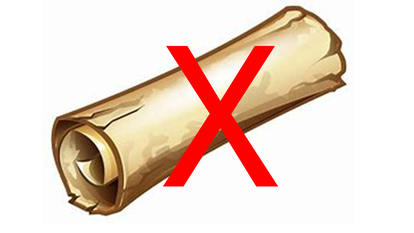 Research has shown that it is the image that stops the scroll. Then the user reads the headline (the words immediately under the image) and then they read the primary text (the main body of the ad). So, you have to “stop the scroll” with the image, hook the reader with the headline and then sell them the book with the primary text. If they like what they have read, they’ll click the link. They may not click the link just because they like the image, so the three things have to work together. That gives you 3 variables and you may have to try different combinations to find the one that is a winner. Without that Facebook will end up spending a lot of your money and you won’t get much in return. If you want to use your book’s blurb as the primary text, you may need to develop different versions of it to appeal to different readers.  The lack of research into what readers find appealing may be why some authors find it difficult to get Facebook Ads to work for them, because they try just one combination of image, headline and primary text and when it doesn’t sell them any books, they give up. We have proven this for ourselves, using 3 different images but with the same headline and primary text. One image always shows up as being more effective than the other two. We then reduce the spend on the less effective ads and increase it on the more effective one. Facebook even has technology (called Digital Creative Testing (DCT)) to help you find combinations that work. You can upload several different images, several different headlines and several different primary texts and Facebook will run ads using the various combinations. You then analyse the results and decide which ones are winners and which are costing you more than they make back. 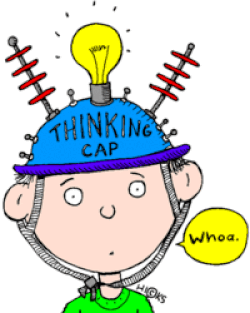 Finally, you have the book promotion sites (Bookbub, BooksGoSocial, WrittenWordMedia et al) which, for a price, will send out promos for your books to their social media followers and email lists. They have rules of their own about what you can and can’t do when using them and they vary too much for us to cover them here. But the same basic idea of developing a strategy that suits the platform applies to them, in just the same way as it applies to Amazon and to social media. So, our key message for this blog is to think about where you are going to advertise, think about why people are using that platform, then develop a strategy that will appeal to that sort of user. Don’t just assume that an ad is just an ad, because it isn’t. * Metadata in book publishing terms means the combination of book title, subtitle, genre, blurb and any keywords you are able to enter. They are critical when you are trying to get your book to show up in search results. If you have enjoyed this blog, or found it informative, then make sure you don’t miss future editions. Just click on the button below to sign up for our newsletter. We’ll even send you a free ebook for doing so.  As an Indie author, are you ready for Christmas? This is one of the best times of the year for books sales, because books make such a great gift. But, just like any other time of the year, your potential readers need to know about your book and how it is going to be the perfect gift for their loved one or friend. If you use Amazon Ads, then now is the time to launch a “keyword” ad aimed specifically at the Christmas market. There are two steps to this. Firstly, find the books by other authors that are like yours and use their titles and the authors' names as keywords in your ad. 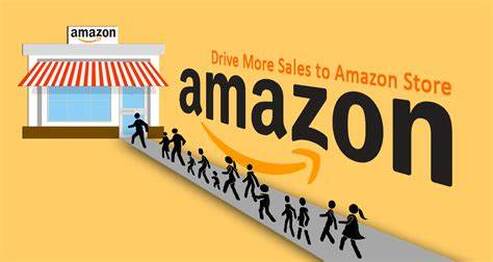 Secondly, add in suitable keywords so that people searching for Christmas gifts also find the book. The most efficient way to do this is to add the words Christmas, festive, seasonal, holidays (if you are American) and similar to other keywords you may use that are related to your book and its genre. For example, Christmas books, Christmas novels, Christmas romance. Christmas mystery etc. If you are a stranger to Amazon Ads, then their tutorials are the place to start finding out more and learn about their power to improve your sales. But Amazon is only one place where you should be promoting your books for the Christmas season. If you are on Facebook, X/Twitter, Linkedin or Pinterest, you should be scheduling posts specifically aimed at the Christmas market.  People are desperate for ideas for gifts to give, so they will appreciate you giving them helpful suggestions. Make sure you include some of those keywords in your posts, so that they show up in searches. Also use hashtags for added searchability. You might also consider setting up some book bundles for readers to buy. This is particularly relevant if you write series and you can bundle 3 or 4 books from the series. By offering a reduced price compared to buying the books individually, you can increase your sales, which increases your income.  If you have your own website where people can buy your books directly from you, then setting up “buy one get one free” (aka BOGOF) offers will also give your books a boost. Everyone loves a bargain and being able to buy two gifts for the price of one is always a winner. Black Friday is 24th November and Cyber Monday is on 27th November and both those days should also be targeted for sales. But you must offer deals on those days, or people won’t buy. 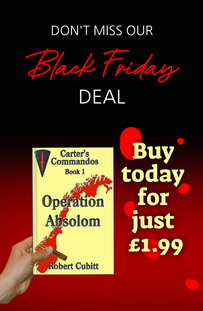 If you have access to graphics packages such as Canva or BookBrush, use their templates to set up some seasonally themed mock ups for your books. Putting your book cover on your social media is OK but, psychologically, displaying it in a Christmas setting is another nudge towards the “buy” button. Making it clear that price is reduced for Black Friday is another nudge. But remember, you aren’t selling your book direct to the reader, you are selling it to a friend or loved one. So the text that accompanies your promotion has to be about how somebody else will love the book. So, a phrase such as “The golfer in your life will love this book” is more appealing that just telling the viewer that your book is about golf. 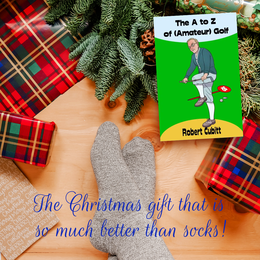 The key to extra sales isn’t about promoting your book once and hoping for the best, it is about promoting your book continually throughout the season. Most social media sites have rules about spam, but if you vary the images and the text you will get away with it, as each post will appear unique. But the Christmas selling season doesn’t end on 25th December.  A lot of people get gift vouchers for Amazon and for other etailing sites, so set up another series of promotions and post them starting on 25th December and running through to the New Year, because that is when people will be going on-line searching for things to buy with those vouchers. Make sure it is your book or books they buy! And, if you are looking for some great book ideas to buy for your friends and loved ones, then you might want to take a look at the ones we have to offer. Just click here to take a look at our catalogue. If you have enjoyed this blog, or found it informative, then make sure you don’t miss future editions. Just click on the button below to sign up for our newsletter. We’ll even send you a free ebook for doing so. Traction and momentum are things that marketers talk about in terms of their campaigns. It relates to the amount of effort that needs to be put in to get results from a marketing campaign and how, once traction has been gained, momentum can be achieved. In terms of money spent, this usually means a lot of it is at the beginning of the campaign, but once traction has been achieved, a lot less has to be spent to maintain momentum.  Let me use an analogy. If you put your child on a swing (assuming you have a child – if you haven’t, you’re a writer, use your imagination) and do nothing, then the swing will just hang there and the child will get no enjoyment from being on the swing. So, you need to apply some effort to get the swing moving so that the child can enjoy the experience. Depending on the size of the child and your own strength, you may have to put in quite a lot of effort to get the swing moving. However, once the swing is moving, all you have to do is step in from time to time to give it another shove to keep it moving. That is what it is like marketing a book.  Newton's 1st Law of Motion - an object at rest will remain at rest. Newton's 1st Law of Motion - an object at rest will remain at rest. If you just upload your book to your distribution platform (I’ll use KDP and Amazon for the sake of ease) then it’s like putting the child on the swing. Nothing will happen unless you make it happen. Yes, Newton’s first law of motion applies even to book marketing – an object at rest will remain at rest. So, once your book has been published, you have to provide the outside force that acts on it to take it from a state of rest to a state of motion and get sales moving. If you are an unknown author publishing your first book, you will have to put in a lot of effort. If you are an established author with a loyal readership, you won’t have to do quite so much – but you still can’t do nothing. Even loyal readers need to know that you have a new book out. But the amount of effort you put in will eventually pay off. You will make sales. The sales will put your book higher up the sales ranks, so Amazon will help you by steering readers towards your book because that will make Amazon more money, and your readers will help you by leaving reviews of your book.  But you can’t back off entirely. Once your new readers have bought your book, they aren’t going to buy it again. This means that your book will start to slide down the sales rankings, the automated systems will pay it less attention and you won’t make so many sales. So, you have to step in and give your swing another push, just to get things moving again. Social media marketing has a part to play in this, but it is never going to provide you with the big push you need to get up the sales rankings. It will sell you the occasional copy, which is the equivalent of the swing just about moving back and forward. Let’s face it, that wouldn’t be very exciting for your child and, in terms of books sales, it isn’t going to be very exciting for you. So, you need to find some way to give the book a bigger push. 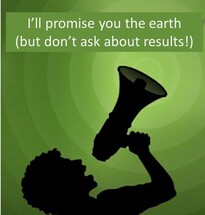 On the internet there is no shortage of people willing to make you lavish promises of results in exchange for your hard earned money. Some people do find success with those book promoters, but I think that it’s true to say that the majority don’t or, at least, they don't get the level of success they had hoped for and which will return a decent profit. Most of the internet companies are using social media to promote their customers’ books and are just doing what you could do for yourself, but on a larger scale, eg more Tweets (are they X’s now?), more Facebook posts, more Instagram posts etc. Again, they may get you a few sales, but they aren’t going to get you to the heights that will get you excited. But there is one tried and tested method to stimulate books sales and we have blogged a lot about it over recent weeks. Amazon Ads do produce results.  The problem with Amazon Ads, however, is that they take time to work. It seems to take an eternity to build traction and get your sales moving. Many Indie authors place an ad for a week or a fortnight, find the results disappointing and halt the ad. Instead, they look for the on-line book promoters who promise instant results, then get very disappointed when they find that they are spending larger sums of money but getting very indifferent outcomes. So, why does it take so long for Amazon Ads produce results?  I’ll return to my child on a swing analogy, but this time imagine you are on the one on the swing, with no one to push you. By moving your body the right way, you can get some motion, because you are putting energy in and that energy has to go somewhere. But you need to keep putting in energy to get you moving faster and higher. If you stop putting in energy, the swing will slow down and stop. To start with, you have buyer resistance. Advertisers maintain that an advertising message has to be seen 7 times before some buyers respond to it. This is why you will see the same ads on TV several times in a night and several more times over successive nights. The marketers are trying to get those 7 viewings in quickly, so the ad starts to pay back through increased sales. 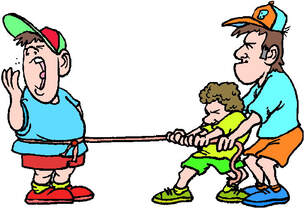 Think about that for moment. Let’s say that Mr X, a reader, goes on Amazon to find a new book. He does a search for the sorts of books he likes to read, and he is presented with a list of results. If you have paid for an advert, then your book will be one of the ones he sees. It’s called an impression and you don’t have to pay for it. However, Mr X has never heard of you, so he scrolls down to the next result, which may be a book by an author he has heard of. He buys their book instead of yours. But Mr X has a limited amount of free time, so it takes him about a week to read the book before he goes back to Amazon to buy his next one. He sees your ad again, but again he scrolls by, looking for a more familiar name. This happens maybe four or five times over the space of four or five weeks, but Mr X then realises that he does know your name now, because it has become familiar through repeated impressions, so this time he might click on your ad. Now, if you pulled your ad after week 2, you could never get that click from Mr X at week 6 or 7.  The ad system analyses Mr X's clicks. The ad system analyses Mr X's clicks. So, this is the first time you have had to pay, and it is also the first time that Mr X is seriously considering buying your book. He may buy it this time, or he may not. A lot will depend on the blurb for the book and the sample he may read. But he will remember your name now, so every time he sees your ad, you have a chance of him buying the book. But, because Mr X has clicked on the ad for your book, the ad system now knows that he might be the sort of reader who will be interested in your book. So, the system analyses the ad clicks that Mr X has made in the past, looks to see who else has clicked on the same books and shows your ad to them, even though they may not have used the same search words as Mr X. You can see this system in action on Amazon, because they show you “People who viewed this item also viewed ….” And “People who bought item this also bought…”  Someone taking a risk on your book. Someone taking a risk on your book. This means more people are now going to see your ad and every time one of them clicks on it, the ad system learns a little bit more and directs your ad to more new people. More new potential readers means more potential clicks and more potential sales. But you still need that first sale, because if your book is low down the sales rankings, it discourages some readers. So, you need to find a reader who is prepared to take a chance on your book without looking at the sales rankings. And they do exist. We know they do exist, because that’s how our authors all sold the first copy of their book. We paid for the advertising, of course, but someone took a chance on them. And someone, somewhere, will take a chance on you – but only if they see the ad for your book often enough. The same applies to reviews. Some people will only buy books if they have reviews, so you need some of those to be posted, which needs sales too (please do not pay for reviews. Amazon is able to spot them and will remove them, so you will only be wasting your money.) So, the graphic below illustrates the process by which ad clicks get turned into sales, which creates traction and leads to more sales, which creates momentum. But, as I said above, the system needs a shove from time to time to keep things moving, so you will need to keep advertising, if only at periodic intervals. You can tell by your sales figures when that should be. If you were making 5 sales a day consistently and that starts to drop to 4, then 3 then 2 etc, it’s probably times to liven things up again with another ad campaign.  Blog Reader: “But it takes so long, and I have to spend so much money.” Yes, but if you are using the system correctly you will get that money back when you gain traction. If you put nothing in, you get nothing out. Remember Newton – an object at rest will remain at rest unless an outside force is applied. You have to be the outside force! And at least you know where your money is going and you are in control, unlike with those on-line marketing companies that promise so much but deliver so little. 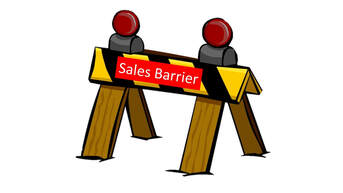 It took you weeks, months, maybe even years to write your book. It can hardly come as a surprise that it could take weeks or even months to get some sales, gain traction and build momentum. And, if you haven’t made any sales after say, 3 months, then it might be worth considering why that may be. Because advertising can only sell a book that the reader wants to read, so if they don’t want to read your book, there has to be a reason and you know the fault can’t be in the advertising, so it has to be in the product. If you have enjoyed this blog, or found it informative, then make sure you don’t miss future editions. Just click on the button below to sign up for our newsletter. We’ll even send you a free ebook for doing so.  Finding the right keywords to include in an Amazon Ad can be a very time consuming activity. Gurus like Bryan Cohen, of Best Page Forward, recommend using 100 - 150 keywords in an ad, and also recommend creating 5 to 10 ads a week. So, that mean finding anywhere between 500 and 1,500 keywords A WEEK! That’s a lot of keywords and it could take a lot of time researching them all. If it takes 1 minutes to research one keyword, that could be as much as 2½ hours to generate enough keywords for a single ad. For 5 ads that could be 12½ hours a week. Who wants to spend that much time on a single marketing activity? Not us, that’s for sure. 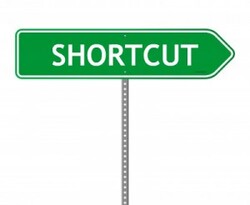 So, we love it when we find a short-cut that will save us some time. To give you some idea of how long it took us to find 150 keywords and create an ad with them, the total was 25 minutes (if you exclude making cups of coffee and answering the telephone). It took us longer to write the first draft of this blog about it! I think most of us can squeeze 25 minutes out of our busy schedules if it means getting an increase in sales for our books. So, how is this magic worked? I’m going to take you through it step by step. The first few steps you may not need to do at all, or you may need to do them only once. The later steps are the ones you have to do every time to generate a list of 100-150 keywords.  If you have any questions after reading this and trying it out, ask them in the comments section and I’ll get back to you as soon as I can. There are 36 steps to this procedure, which seems like a lot, but some of them describe just one mouse click or screen tap. Once you are familiar with it, the whole process takes a very short time, so don’t be put off by that number. You may want to do a “split screen” on this, so that you can read the instructions from the blog and then try them out as we go along. Or you may prefer to print this blog and follow the instructions that way. OK, let’s go!  1. If you don’t already have the Google Chrome browser installed on your PC or laptop, download and instal it. 2. Once you have Chrome installed, open it and instal “Kindletrends Also Bought downloader” It is free. It will instal into Chrome automatically, so you don’t have to do anything (you can also instal the extension into other browsers, but we don’t have a full list which is why we specify using Chrome). 3. Open Chrome and look at the top right hand corner of of the page and you will see 3 vertical dots. Click on those to access the Chrome settings menu. 4. Click on “Extensions” and then “Manage extensions”. 5. Locate the “Also Bought” downloader extension and click on “Details”. 6. Locate the line that says “Allow in incognito” and switch it on if it isn’t already switched on, then exit back to the Chrome home screen. That is the end of the steps that you will only have to do once. Now for the steps you have to do every time.  7. At the top right hand corner of Chrome, find the 3 vertical dots again and click on them. 8. Click on “New incognito window”. The reason you use incognito browsing is so that Amazon doesn’t identify you from your IP address and start to offer you the sort of books that you normally read. You want to find the sort of books that you write, which may be different. Now you are going to identify books like the ones you write. You may have some of these by other authors on your own bookshelves, which is a good place to start. If you haven’t, then you are going to have to take a more “trial and error” approach. We use Publisher Rocket to help us identify books and authors in the categories in which we are advertising, but if you don’t have that, don’t worry. I’ll assume you don’t have any relevant books to hand, and you don’t have Publisher Rocket. 9. In your incognito browser, go to the Amazon website for the country in which you wish to advertise. For example, you may live in UK but want to advertise in the USA, so you need to go to Amazon.com. Conversely you may be the USA but want to advertise in the UK, in which case you need to be on Amazon.co.uk. The site you choose will affect the results of your search, which you are going to do next.  Some authors have international popularity, but many don’t. There is no point in including keywords relating to an author who is popular in the USA but no one on the UK has ever heard of, and vice versa. 10. In Amazon’s search bar, type in a search term for the sort of books you write. For example, you could type in “historical romance” if that is what your write. But you may want to narrow that search down a bit by adding tropes from your book, such as “enemies to lovers” or “pirates” or whatever tropes you have used in your book. You can also search using an ASIN, a book title or the name of an author if they are in a category relevant to your book.. 11. From the search results, choose a book that you think is similar to yours and click through to its sales page. Make sure you are viewing the version you are going to be advertising, eg ebook, hardback or paperback.. 12. Read the blurb to check that it is like yours. You may even want to read a bit of what used to be called the “Look Inside” but now is just referred to as a sample. 13. If you are happy that the book is one that you might find on the same shelf as yours in a bookstore, go to step 14. If not, go back to step 11 and repeat. "You will see a whole jumble of data that doesn’t make much sense." 14. Now scroll down the page until you get to the carousels that are named either “What did customers buy after viewing this item?” or “Customers who viewed this item also viewed” (the words may vary a little depending on which country you live in). The former is the best but isn’t always displayed, so you may use the latter, but you can also use both if you wish. You will get some duplication in your results, but there is a simple step to remove them later. 15. Next to the text described in step 14, you will see a little icon that looks like a blue fairy cake with a red candle. This is the icon for the “Also Bought” plug-in. Click on this. The books displayed will start to scroll across the screen, which indicates that their details are being downloaded. When the scrolling stops, the download has finished. This could take up to a minute, depending on how many books there are in the carousel. 16. You may repeat steps 11 to 15 to gather more keywords, or you can go straight to step 17 and return later if you think you need more keywords. 17. Open “file manager”, locate the downloads folder and open it. 18. Open Excel (or whatever spreadsheet app you use) and open a new spreadsheet. 19. In the downloads folder, you will see the list of downloads that you created at step 15. There will be a .png version and a .txt version. The .png is an image of the book covers. You don’t need to use that. Double click on the .txt version to open it. You will see a whole jumble of data that doesn’t make much sense. DON’T PANIC! 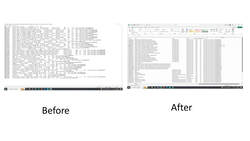 20. In the text reader, go to “edit” and then “select all” to highlight the text, then copy it. 21. Paste it into the spreadsheet. It should now be nice and neatly displayed in columns, starting with the ASIN (Amazon’s catalogue number) on the left, then the title, series name, author name and then the other stuff. You can delete all the stuff to the right of the author’s name if you wish. 22. Repeat steps 17-21 for each of the .txt files you downloaded. 23. I don’t use ASINs in my keyword searches, but if you wish to you can. Everything I say from here on applies to them as well as to the other columns. 24. In an ordinary browser, Open “Keyword Cleaner”. This is a free webpage which will help you to clean up your keyword list (don’t forget to add it to your “favourites”, because you will use it a lot). 25. Copy the contents of one of the columns of your keywords from the spreadsheet. I always start with “title” and you will see why at step 34. 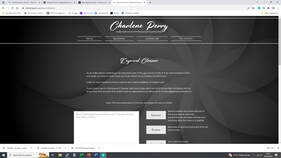 26. Paste that into the big box on Keyword Cleaner. 27. There are 6 buttons to the right of the big box and you will use at least 5 of them. 28. Click on the button marked “Separate”. This will remove any subtitles or series names that have been included with the title, providing they have been separated from the title by a semi-colon, colon, hyphen or brackets. They will re-appear in smaller boxes further down the page. 29. Click on the button marked “Format”. This will remove most of the special characters that Amazon Ads doesn’t like, if there are any in the list. 30. You can click on the box marked “Sort A-Z” but I don’t usually bother. Amazon Ads sorts keywords alphabetically after they have been entered anyway. 31. Click on “De-duplicate” This removes any duplicated entries. 32. Click on “Copy”. 33. Open a “Word” document (or similar) and paste the list of keywords into the document. 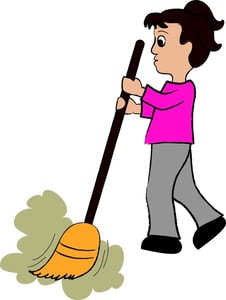 It may be necessary to clean up the list. It may be necessary to clean up the list. 34. Keyword Cleaner isn’t smart, so it can’t always recognise subtitles and series titles and remove them, so it may be necessary to “clean-up” the list a little bit more at this point. This means removing anything from the title that shouldn’t be there. For example, if we got the result “Ten Years To Doomsday a gripping intergalactic action-packed science fiction novel”, everything after “Doomsday” should be removed because it isn’t part of the title. Similarly in the result “Battle Cruiser Elite A Military Sci-Fi Space Opera Adventure”, everything after “Elite” would be removed. 35. Use the 6th button, “Clear”, to make Keyword Cleaner ready for the next lot of data you are going to paste in. 36. Repeat steps 24 to 35 to do the same for the columns marked “ASIN”, “Series” and “Author” in your spreadsheet. They shouldn't need any additional cleaning. At the end of the process, you will have a list of keywords that is duplicate free and ready to be copied into Amazon Ads.  You may want to check how many keywords you have and the quickest way to do that is to highlight the list, go to the “Review” menu on Word, click on “Word Count” and that will tell you how many lines of text you have, which is also the number of keywords in the list. If you haven’t got enough, go back to step 10 and repeat from there. And that is that. Once you’ve done it a couple of times you will be generating keyword lists in 25 minutes or less each time. If you have enjoyed this blog, or found it informative, then make sure you don’t miss future editions. Just click on the button below to sign up for our newsletter. We’ll even send you a free ebook for doing so. |
AuthorThis blog is compiled and curated by the Selfishgenie publishing team. Archives
June 2025
|

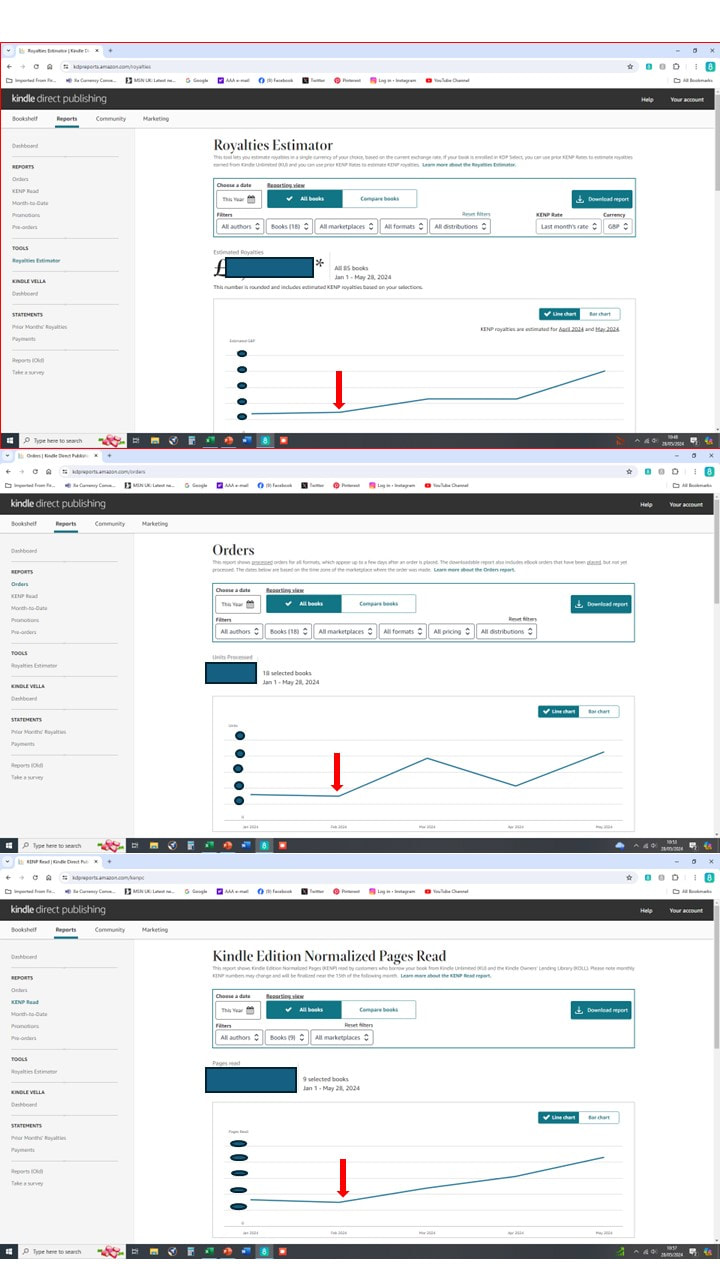
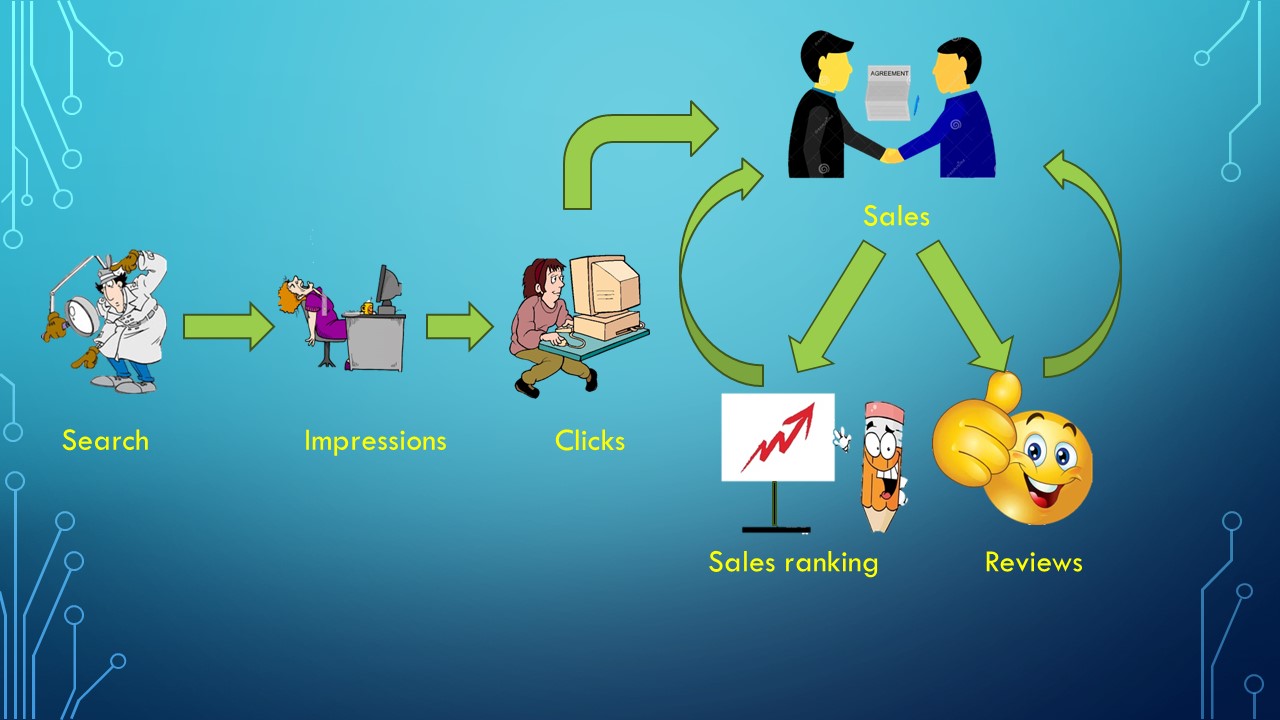
 RSS Feed
RSS Feed